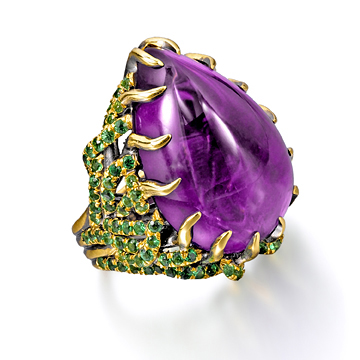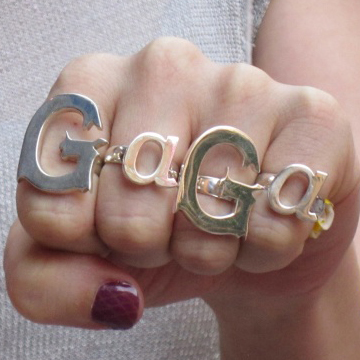There were two good articles about fine jewelry in consumer-oriented publications recently. I’m excited because it’s relatively rare to find interesting stories about my industry outside the trade press.
Laurie Brookins’s article in the September 20 issue of The Hollywood Reporter was called “Hollywood’s Pay-to-Wear Jewelry Wars” (in the print edition). This is far from the first time someone has written about celebrities being paid to wear fine jewelry on the red carpet, but the deal-making still surprises a lot of people. How do I know it’s surprising? Because non-jewelry folks are constantly asking me, “Why don’t you just get your jewelry on a celebrity?” That line of questioning makes me feel a little stabby, especially because the word “just” is always involved. “Just” makes it sound so easy, like I’ve “just” been too lazy to call my close, personal friend Beyoncé and ask her to wear one of my rings to the Grammys.
The reality is that even people who have been in the red-carpet jewelry game can find themselves on the outside looking in when they’re outspent. As Brookins writes:
“Two days before New York City’s Met Gala in May, a jewelry publicist assumed that she was all set with product placements on several A-listers. Then her phone started ringing. ‘Agents told me that their clients were being offered payment to wear another house’s jewels, and they wanted to know if I could match it,’ she recalls. ‘Until that moment, I didn’t even know I was in a bidding war.’
The publicist had no budget for red-carpet placements, and “lost most of her stars to other jewelers.” So, unless you’ve got $750,000 to loan me, stop asking me why I don’t “just” get some jewelry on the damn Oscar nominees! If you want to make yourself useful, call your close, personal friend Lady Gaga and ask her if her stylist’s publicist’s intern ever gave her the sterling-silver ring set I sent as a gift in 2010.
The second article that intrigued me ran in the Personal Business section of the New York Times on September 23. In “Rare Necklaces and Rings Are Items to Appreciate. Just Ask Investors,” Paul Sullivan wrote about how jewelry by the top design houses (Cartier, Tiffany, Bulgari, etc.), made during their signature periods, goes up in value. I nearly kissed the newspaper when I read:
“… the pieces with the most investment potential have a level of craftsmanship in addition to scarcity that makes them stand out from the beautiful baubles that are produced year after year — and appreciate beyond the value of their metals and gems. These are not the run-of-the-mill pieces that mall jeweler might sell.”
I felt like he was writing about me! But then Sullivan pointed out that it’s all about an iconic name: “There are a half-dozen jewelry designers that are known worldwide for their quality. That recognition makes reselling their jewelry easier.” Dang! I’m not Cartier, and he rubbed that in by noting, “Contemporary jewelry is a tougher market for buyers to predict investment potential.”
Still, this part works in my favor: “The top houses are still producing exceptional pieces, but given the high cost of metals and stones, many of the pieces are lighter and less intricate than a generation ago.” The top houses are still producing exceptional pieces, but given the high cost of metals and stones, many of the pieces are lighter and less intricate than a generation ago.” You know I don’t skimp on either metal or details. I may not have the budget of Bulgari but I do the absolute most with what I do have. Plus I make mostly one-of-a-kind or limited-edition pieces and, as Sullivan says, “Scarcity is important.” Feel free to make a good investment by shopping here. I can also make you a completely custom design. Email me at info at wendybrandes dot com to inquire.

